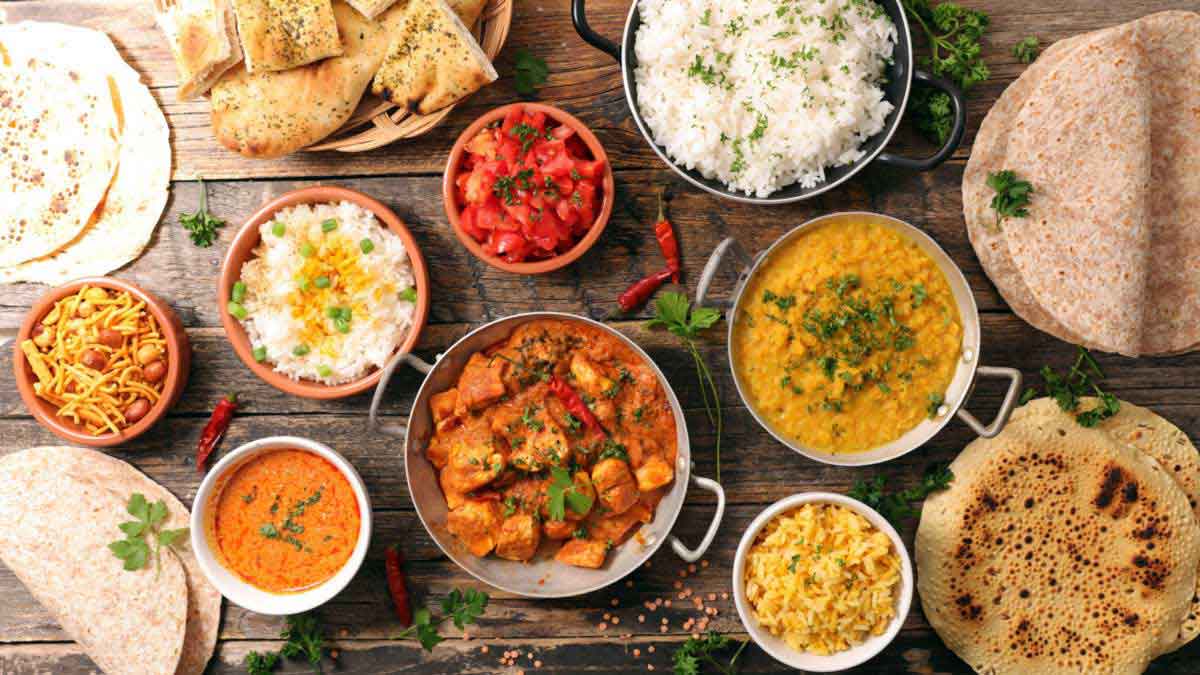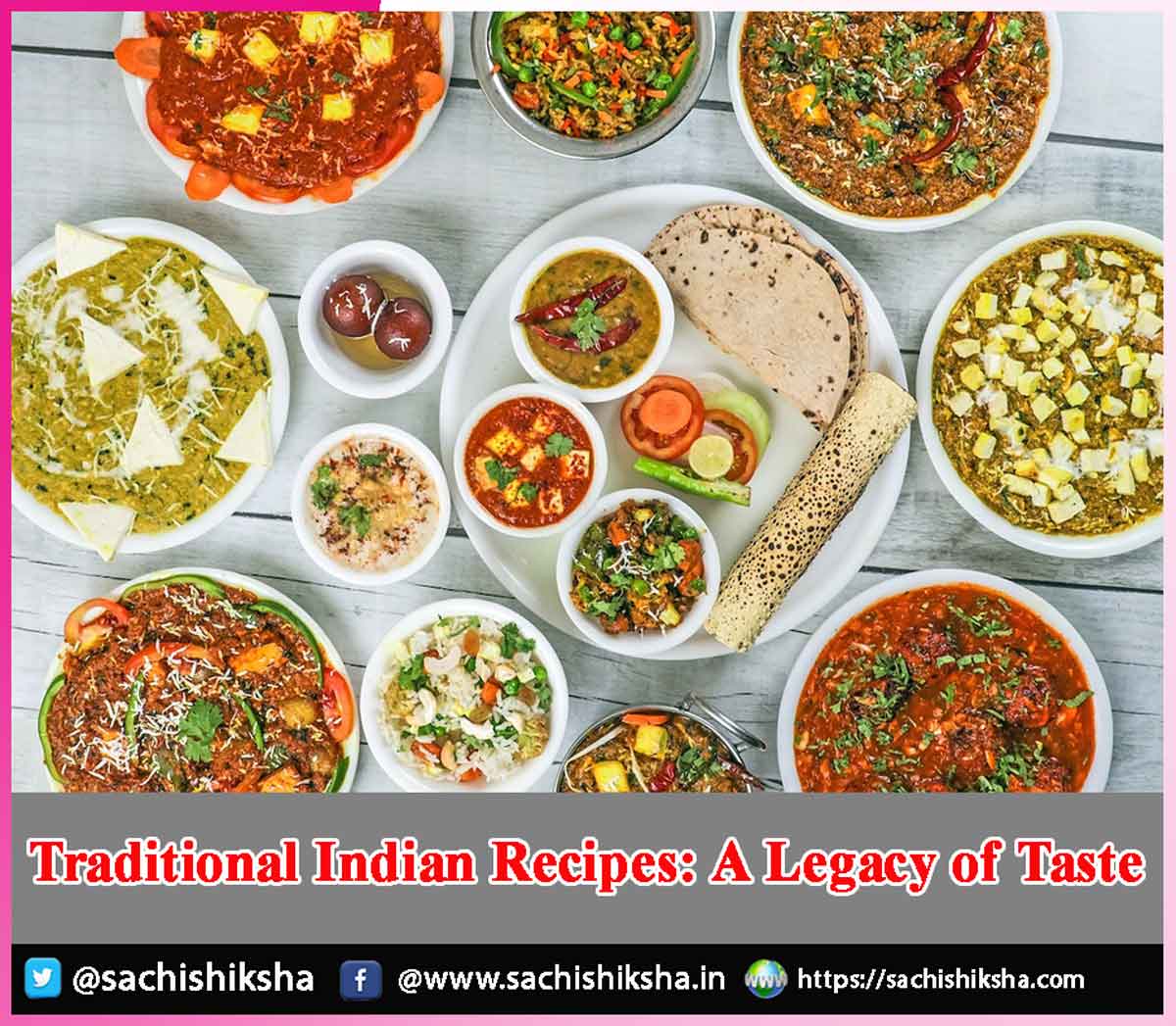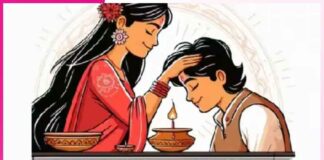Traditional Indian Recipes: A Legacy of Taste
Introduction: India is known for its diversity around the globe. It is diverse in every aspect. In fact, it is a melting pot of numerous religions, cultures, languages, practices, rituals, and more. One major aspect that cannot be overlooked is the diverse food that India offers.
Table of Contents
Delectable Taste & Welcoming Nature:

Rich Tapestry of Culinary Delights:
With recipes originating from various states, cultures, subcultures, and subgroups, the options are endless. Each recipe possesses its unique flavor profile, reflecting the country’s rich cultural heritage. The Indian subcontinent, encompassing the north, west, south, and east, presents a rich tapestry of culinary delights. Each region offers unique, delectable, and flavorful dishes that are unparalleled and incomparable to one another. These heavenly flavors are not just superficial; they are deeply rooted in history, culture, and the people who created them.
History and Cultural Heritage:
Every food item has a story to tell, connected to its origins, regional identity, customs, and traditions. The way people cook also reveals a great deal about their history and cultural heritage. Food is more than just a meal; it is a window into the past, a reflection of societal values, and a testament to the region’s diversity. Exploring the stories behind these dishes is a journey worth taking, as it leaves one in awe of the fascinating tales and historical events that shaped the creation of these culinary masterpieces.
Optimal Mix of Essential Nutrients:
It’s worth nothing that traditional Indian cuisine is inherently wholesome, complete, and balanced, offering an optimal mix of essential nutrients like protein, healthy fats, vitamins, minerals, and dietary fiber. In contrast, the prevailing trend among Indian youth, particularly teenagers, is a diet dominated by low-fiber, high-fat, and rich-carbohydrate foods. This shift in eating habits has been influenced by the perception that Western food culture is superior.
Recognize the Health Benefits of Indian Cuisines:
However, it’s crucial to recognize that traditional Indian cuisine can provide numerous health benefits for both children and adults. The government, particularly the Ministry of Health and Family Welfare, and organizations like the Food Safety and Standards Authority of India (FSSAI), should take proactive steps to promote healthy eating habits.
Promote Adoption of Traditional Indian Cuisine:
One key initiative could be to ensure accurate labeling of food products, highlighting the presence of trans fats and other unhealthy ingredients. Furthermore, there should be a concerted effort to discourage the consumption of unhealthy foods and promote the adoption of traditional Indian cuisine, which offers a rich array of nutritious and balanced meal options. By taking these measures, we can empower future generations to make informed choices about their diet and foster a healthier relationship with food.
Some Forgotten Desserts:
Some traditional Indian food items that are almost forgotten but deserve to be revived include Kaachnar, a sweet and sour curry made with elephant apple, which is a specialty of Bengal. Makhana, a sweet dish made with fox nuts, milk, and sugar, is another forgotten delight from Bihar. Chilka Roti, a traditional flatbread made with chilka, a type of millet, is a forgotten treasure from Odisha. Pitha, a traditional rice cake made with fermented rice and sesame seeds, is a specialty of Assam. Other forgotten gems include Kulfi Falooda, a traditional dessert made with kulfi, vermicelli, and nuts, and Ragi Ambli, a traditional breakfast dish made with ragi, or finger millet, and buttermilk, from Karnataka.
Recently Revived Indian Food Items:
On the other hand, some traditional Indian food items that have been revived in recent times include millets, such as ragi, bajra, and jowar, which were once considered poor man’s food but have gained popularity due to their nutritional benefits. Kulfi, the traditional Indian ice cream, has also seen a resurgence in popularity, with many modern variations and flavors. Jalebi, the crispy, sweet dessert, has been revived in many modern avatars, including stuffed jalebis and jalebi-inspired desserts. Idiyappam, the traditional rice noodle dish from Kerala, has been revived in many modern restaurants and is now considered a popular breakfast option. Misal Pav, the traditional street food from Maharashtra, has also been revived in many modern restaurants and is now considered a popular breakfast option.
Rich in Fiber:
Indian cuisine is inherently rich in fiber, which plays a vital role in maintaining healthy metabolism and digestion. However, the prevalence of diseases related to poor digestion and metabolism has increased significantly, primarily due to the consumption of low-fiber foods and diets high in carbohydrates and fats, often influenced by Western eating habits.
Fostering Deeper Appreciation for Traditional Indian Cuisine:
Ironically, while the Western world is embracing Indian spirituality, cuisine, and culture, we are adopting unhealthy habits from the West, neglecting our own time-tested practices. It is essential to promote traditional Indian recipes, which offer a perfect blend of nutrients. Schools should integrate nutrition education into their curriculum, encouraging students to participate in home science classes and acquire basic culinary skills.
By imparting knowledge about the nutritional profiles of various foods and teaching students how to prepare healthy meals, we can empower them to make informed choices. This approach will help counter the allure of instant, processed foods that dominate supermarket shelves and are detrimental to children’s health. By fostering a deeper appreciation for traditional Indian cuisine, we can promote healthier eating habits and well-being among future generations.
Four Traditional Indian Recipes
North: Palak Paneer
First spinach puree is made by blending 2 cups of fresh spinach leaves with 1 cup of water. Paneer is then marinated in a mixture of yogurt, lemon juice, and spices. Spinach puree is heated with garlic, ginger, and spices, and your marinated paneer is added to it. Your dish is then simmered until the paneer is fully coated in the spinach sauce.
South: Sambar
Slit red lentils and vegetables are cooked in water until they become tender. Your turmeric, coriander, and cayenne pepper are added to the mixture, which is then simmered for a few minutes. Your tamarind paste and sambar powder are added to the mixture, which is then simmered for another 10 minutes. Your sambar is served hot with rice or idlis.
East: Eromba (Manipuri-Style Potato and Pea Dish)
Your potatoes and peas are boiled until they become tender. Mustard oil is heated with onions, garlic, and ginger, and your boiled potatoes and peas are added to the mixture. Your turmeric, coriander, and chili powder are added to the mixture, which is then simmered for a few minutes. Your eromba is served hot with rice.
West: Handvo (Gujarati-Style Savory Cake)
Your rice, lentils, and vegetables are mixed with yogurt and spices to form a batter. Your batter is then poured into a greased pan and cooked until it becomes golden brown. Your handvo is served hot with chutney or raita. To relish and dive in the wonderful flavours of our traditional cuisine is indeed a pleasure in itself.














































